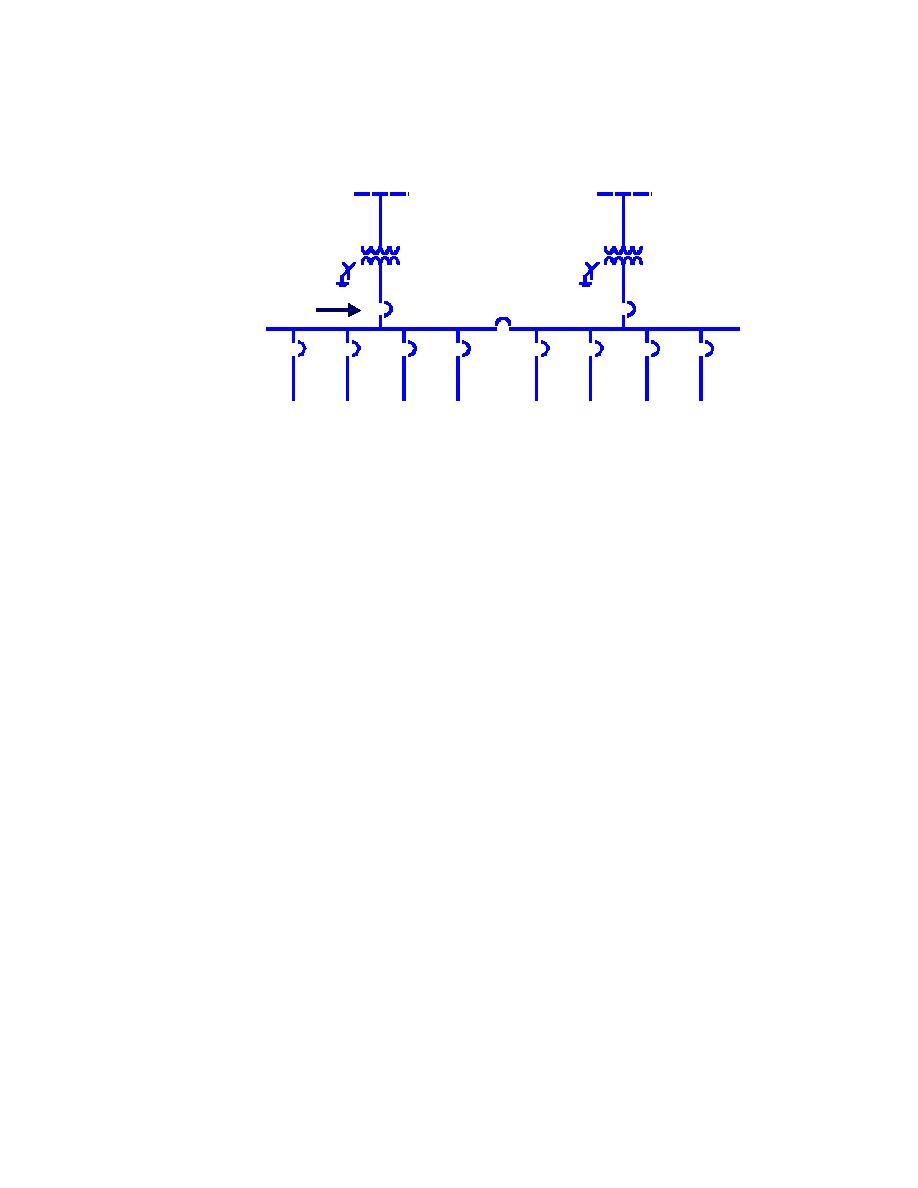
UFC 3 -520-01
June 10, 2002
Figure 3-2. Redundant Power Feed to Facility
Separated Commercial
Power Feeds
Each transformer capable of
carrying total critical load
480Y/277V
480Y/277V
Only 2 of 3 breakers
closed at one time
NC
NC
NO
and interlocked
To steady-state loads
To loads that create the most
that produce the least
disturbances such as large
power quality problems
motors or rectifiers
3-2.3
Under normal conditions, use commercial power as the prime source of
power. Use base-generated power (Class A) as the prime source for all loads when
commercial power is not available or is determined to be inadequate.
3-2.4
Provide duplicate commercial power source, transmission feeders,
substations, distribution feeders, or base prime generating plants where approved for
system reliability requirements. Duplicate prime sources should be provided for the
following loads:
Tactical mission where either source is subject to attack or sabotage. If possible,
the duplicate source should be separated approximately 1.6 kilometers (one mile )
from the other source, with adequate protective measures incorporated into the main
transformer banks and prime power source.
Large loads exceeding 20,000 kW design capacity served from any one substation
or generating plant.
Operational loads as specifi cally determined by the authority having jurisdiction.
3-3
ALTERNATE AND BACKUP POWER SOURCE.
3-3.1
An alternate source system should normally consist of battery supplies for
small loads such as fire alarm or emergency lighting systems. Diesel engine po wer
generating units should be used to provide electrical power for larger loads during an
interruption of the normal power supply. For the Air Force, refer to Air Force Instruction
(AFI) 32-1063, Electric Power Systems, for additional information.
3-3.2
Loads served by an alternate source normally consist of critical systems and
equipment only, unless designated otherwise by specific agency criteria. The types of
critical loads include the following:
3-4


 Previous Page
Previous Page
